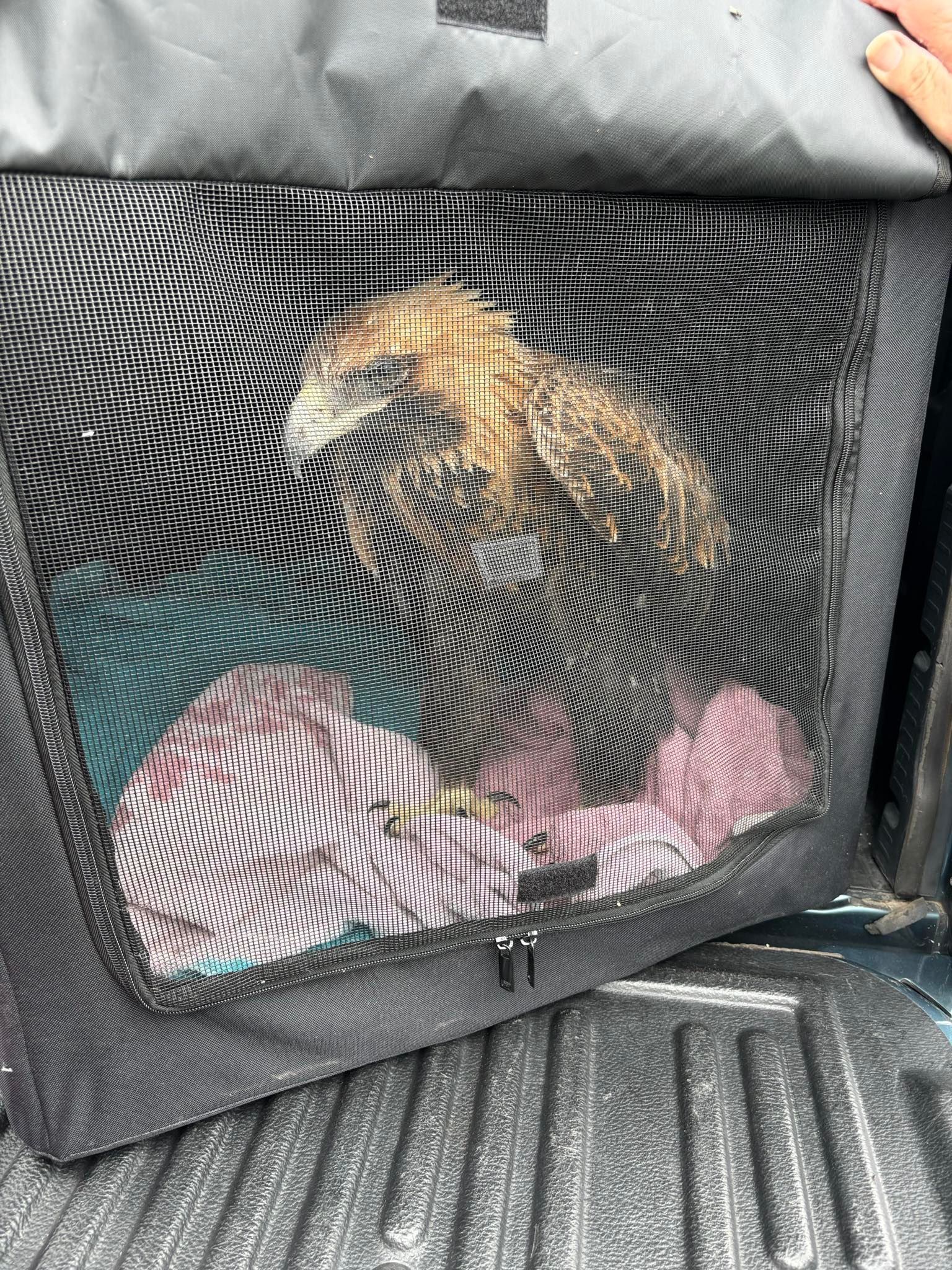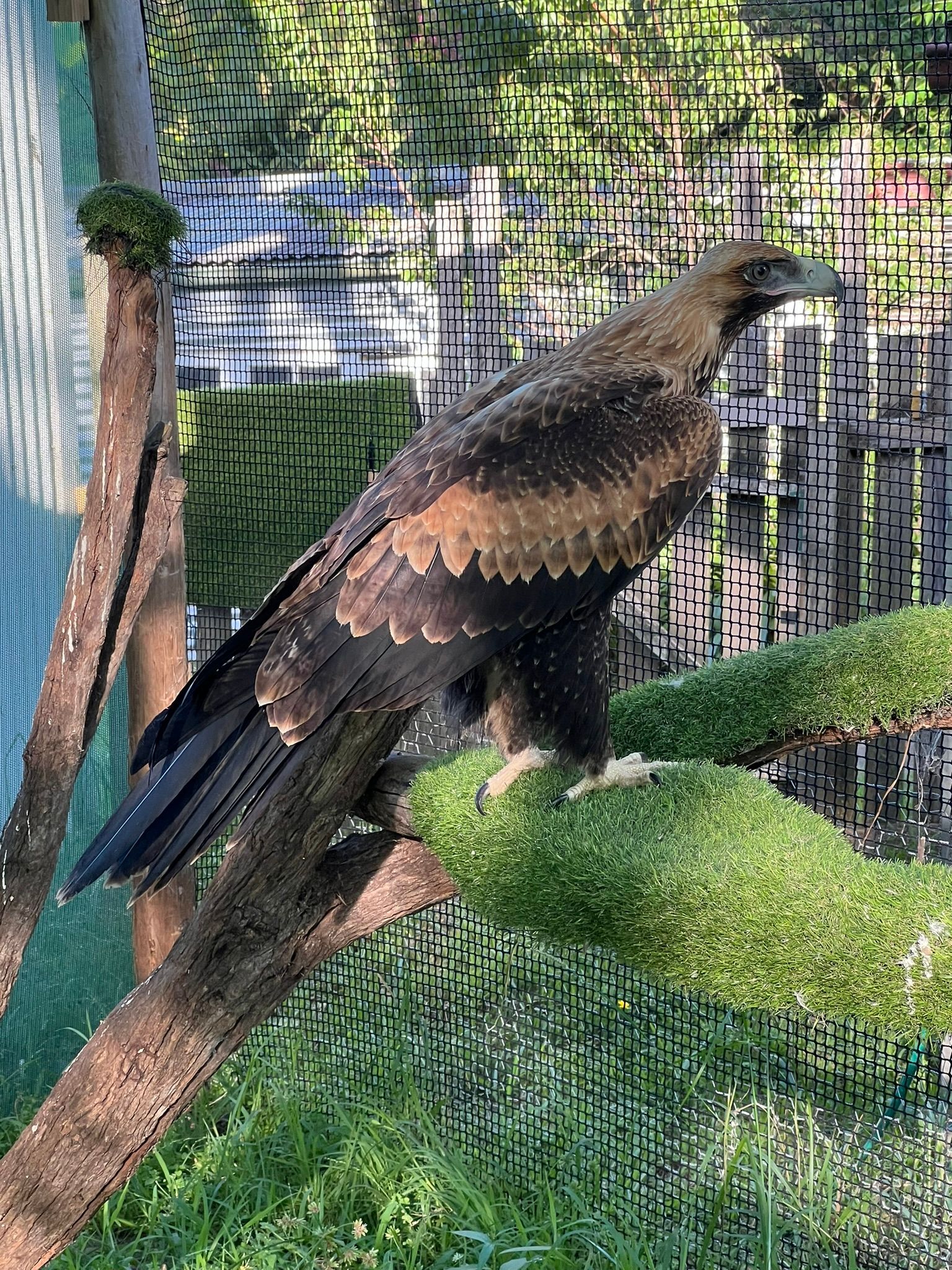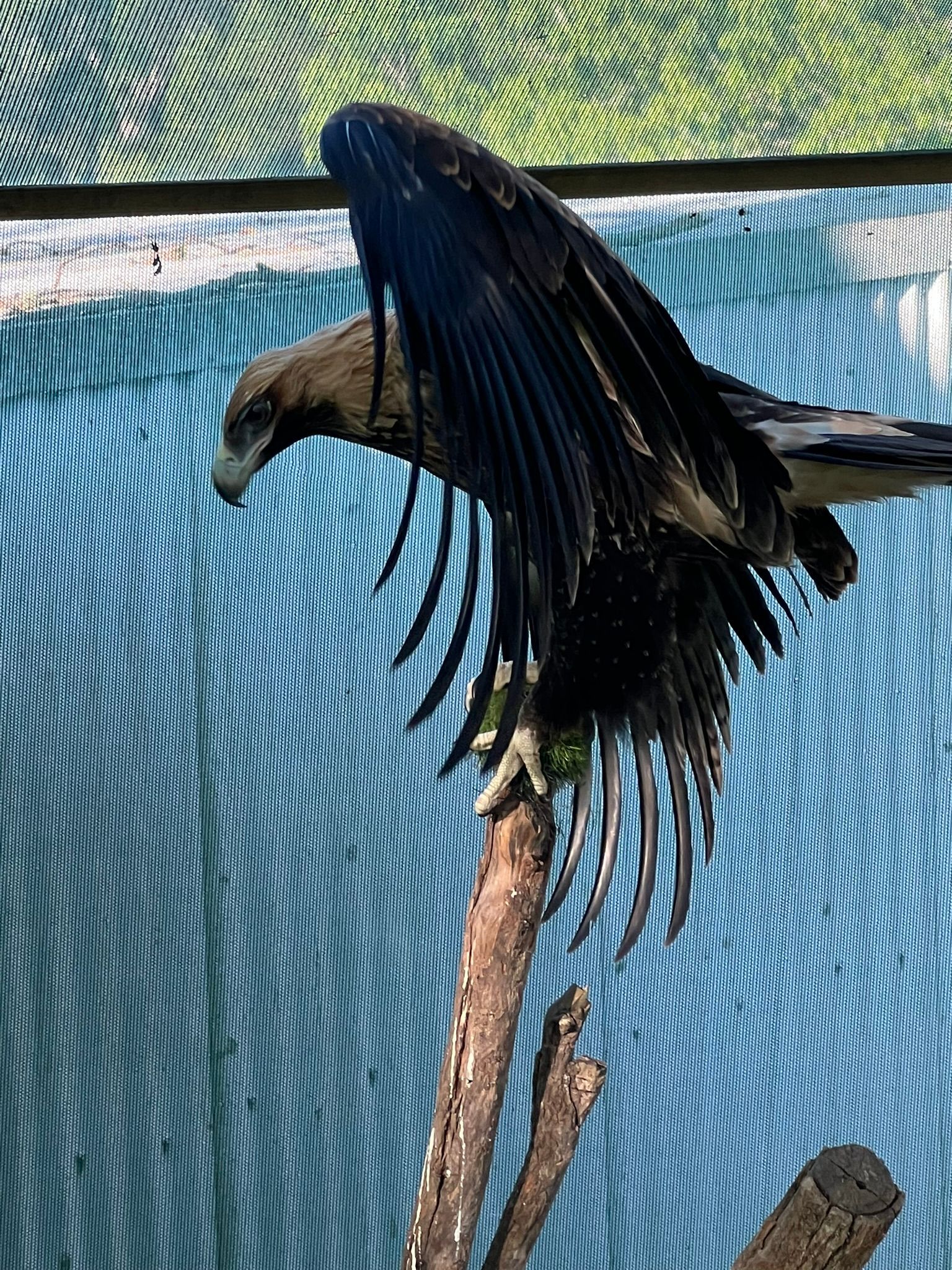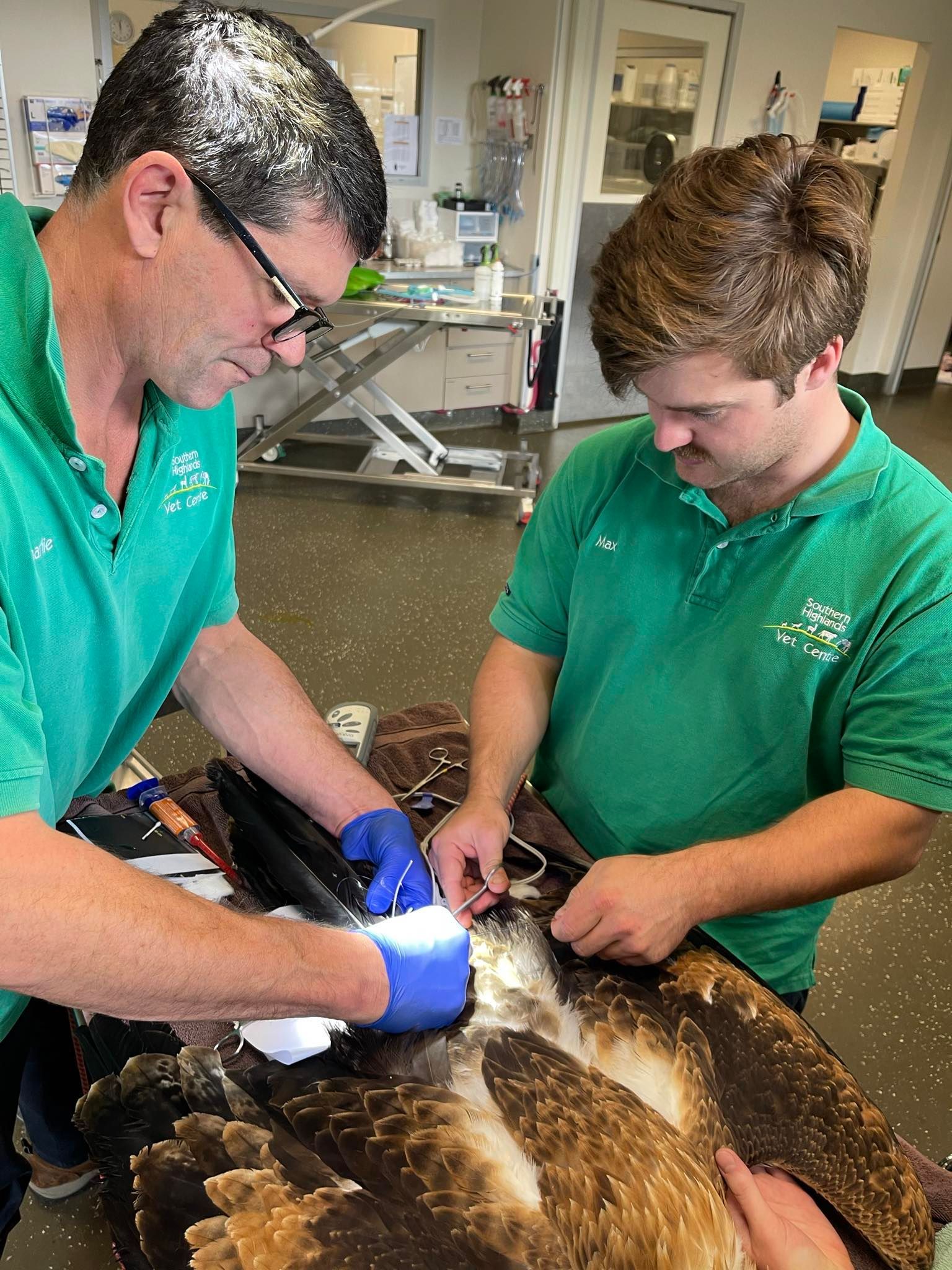WEDGE-TAILED Eagle
Miss NeRRIGA
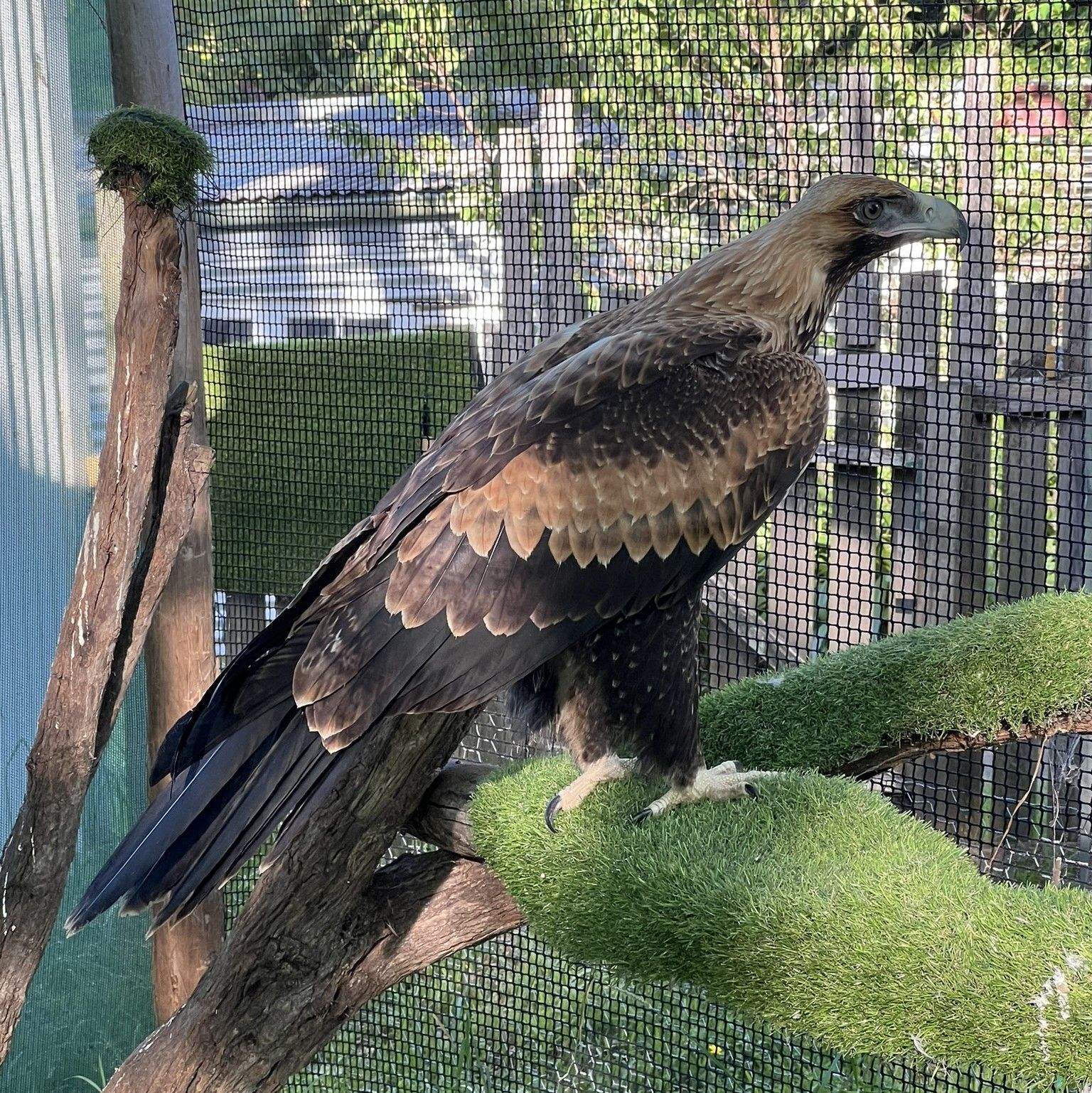
bio
Miss Nerriga was found as a fledgling on a private property near Nerriga, NSW. The owners had seen her on their dam the previous day, and when approached, she hobbled away but made no attempt to fly. They reached out to their local wildlife rescue group, and were able to successfully rescue her and arrange for transport for veterinary evaluation.
Luckily, she had no injuries, but was severely emaciated and underweight. Her age suggests she would have fledged from the nest but should still be living within her parents' breeding territory, and being supported by them until she was ready to disperse. It is suspected that she had either dispersed away from her parents too early, or was no longer receiving support from them for reasons unknown.
Feeding an emaciated bird must be done gradually and with care, to allow the recovery of the digestive system while ensuring adequate calorie intake. This was initially done at Southern Highlands Veterinary Centre, before Miss Nerriga was able to graduate to the aviaries at Higher Ground Raptor Centre - South Coast.
Once she has regained weight and condition, she started to show pre-dispersal behavioural signs, and returned to SHVC for a pre-release health check and to have a satellite tracker applied.
She was released back on the property on which she was found on 11th April, 2024.
MISS NERRIGA
ARCC Inc monitors all birds on a daily basis to ensure movement of the bird appears normal. If we see any abnormal movement patterns that suggests the bird is in distress, we alert both the group that rehabilitated the bird, as well as the appropriate wildlife rescue group local to the bird's position, should intervention be required.
While we share tracking data with the rehabilitation group regularly, so they can follow their bird's progress, we do embargo the public release of this information for 2-4 weeks in order to protect the bird from disturbance during this critical post-release period.
After staying within the forested slopes of the Great Dividing Range throughout her first month, Miss Nerriga moved North-West to the other side of the ACT, to open country west of Yass and Murrumbateman - only about 20km from Reggie's parents' territory!
Over the six months she was tracked, Nerriga covered the south-east area of NSW, travelling north as far as the Southern Highlands, just south of Wollongong, all the way south to the Victorian border; from the Great Dividing Range in the east and west to the Southern Tablelands region. Despite being of dispersal age at the time of release, Nerriga did not show the lengthy dispersal flights that other birds of her age (such as Reggie) performed.
On October 15th, Nerriga's tracker was noted to have stopped moving. Sadly on the 16th, she was found deceased on a sheep property near a dam, along with a dozen other deceased Wedge-tailed eagles. A full post-mortem examination was performed, including radiographs, toxicity screening and necropsy, but unfortunately results have been inconclusive. One positive finding however, was that at the time of death she was in excellent condition and had clearly be thriving up until that point. The case was reported to the relevant authorities but we are yet to hear any news from the investigation.
journey
Just before rescue. She was extremely thin, and likely had not been able to find food.
Photo credit: Andrew
Thanks to Andrew, Nerriga's rescuer!
Just after rescue.
Photo credit: Andrew
Initial health check after rescue, in an emaciated condition.
Photo credit: Southern Highlands Veterinary Centre
Feeling better already after initial treatment post-rescue.
At the vet for a health check.
Photo credit: Southern Highlands Veterinary Centre.
During rehabilitation.
During rehabilitation.
During rehabilitation.
Pre-release health check and tracker placement.
Photo credit: Southern Highlands Veterinary Centre
Pre-release health check and tracker placement. This is performed under general anaesthesia.
Photo credit: Southern Highlands Veterinary Centre
The tracker is attached to the shafts of the central tail feathers.
Photo credit: Southern Highlands Veterinary Centre
ARCC Inc’s satellite tracking projects aim to monitor birds of prey after release from rehabilitation, to collect data on post-rehabilitation dispersal, behaviour and survival, which can then feedback to and inform rehabilitation processes and protocols. The rehabilitation story does not end at release – we need to know if our rehabilitation techniques ensure these birds not only survive, but thrive.
In the spirit of reconciliation, Australian Raptor Care and Conservation Inc acknowledges the Traditional Custodians of country throughout Australia and their connections to land, sea and community. We pay our respect to their Elders past and present and extend that respect to all Aboriginal and Torres Strait Islander peoples today. We recognise and appreciate the traditional significance and cultural roles birds of prey play in the lives of our First Nations people.




